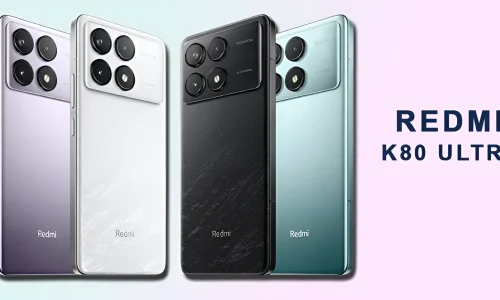In today’s digital age, bloggers, influencers, and website owners have numerous ways to monetize their platforms. One of the most lucrative and mutually beneficial strategies is through sponsored content and brand partnerships. These collaborations not only offer an additional revenue stream but also help build credibility and trust with your audience by showcasing products and services you believe in.
If you’re looking to boost your earnings, sponsored content and brand partnerships could be the perfect fit. In this blog, we’ll dive into how to effectively leverage these opportunities, whether you’re just starting out or are looking to scale your current strategy.
What is Sponsored Content?
Sponsored content refers to content that is created in collaboration with a brand or advertiser. The content is typically designed to promote the brand’s products or services in a natural, informative, and engaging way. Sponsored content can appear as blog posts, videos, social media posts, podcasts, or even emails.
The key to successful sponsored content is authenticity. The best campaigns don’t feel like an outright ad but rather like a recommendation or useful information that adds value to your audience. This type of content allows the brand to reach a targeted audience while you earn revenue for creating and promoting it.
What are Brand Partnerships?
Brand partnerships go a step further than sponsored content. In a brand partnership, you collaborate with a brand or business over an extended period. This could mean recurring sponsored content, co-branded initiatives, product launches, or even joint marketing efforts. The primary difference is that brand partnerships are often more involved, long-term relationships between the brand and the creator.
For example, a popular lifestyle blogger might partner with a sustainable fashion brand to create a series of blog posts, Instagram stories, and exclusive discount codes for their audience, all while receiving compensation for the collaboration.
How to Leverage Sponsored Content and Brand Partnerships for Earnings
1. Build an Engaged and Targeted Audience
Before you can start working with brands, you need to have an engaged audience that aligns with the brand’s target demographic. Brands are looking to partner with individuals who have an audience that trusts their recommendations and is interested in their products or services.
Focus on building a community around your content. Whether you’re a blogger, YouTuber, or social media influencer, your content should be consistent, valuable, and engaging. Over time, you’ll build trust with your audience, which will make you more appealing to potential brand partners.
Tip: Use analytics tools to monitor your audience’s demographics, interests, and behaviors. This will allow you to pitch yourself to brands that align with your niche.
2. Find the Right Brands to Partner With
Finding brands that align with your niche and values is crucial. You want to make sure that the brand’s products or services resonate with your audience, ensuring the partnership feels natural and authentic. Here’s how to find the right brands:

- Research Brands in Your Niche: Look for companies that are already targeting your audience. For example, a fitness influencer might look to partner with activewear brands or nutrition supplement companies.
- Use Affiliate Networks: Platforms like ShareASale, Rakuten, and CJ Affiliate offer brand partnerships and sponsored content opportunities.
- Reach Out: Don’t wait for brands to come to you. Reach out to companies you admire and pitch a collaboration that benefits both parties.
Tip: Be transparent about your audience size and engagement metrics. Brands want to know the value they’re getting from partnering with you.
3. Create a Media Kit
A media kit is a one-stop shop for showcasing your website, blog, or social media platform to potential brand partners. It should include:
- Audience Demographics: Age, gender, location, and interests of your audience.
- Traffic Metrics: Page views, social media followers, engagement rates, and email list size.
- Previous Collaborations: Highlight past brand partnerships or sponsored content to show your experience and success.
- Content Strategy: Explain your approach to sponsored content and how it aligns with your brand.
Your media kit acts as a digital resume, making it easier for brands to decide whether you’re a good fit for their campaign.
4. Create Authentic and Engaging Sponsored Content
When it comes to creating sponsored content, authenticity is key. If your audience feels that you’re promoting a product solely for the money, it can damage your credibility. Here’s how to keep it genuine:
- Incorporate the Brand into Your Style: Don’t try to sound like an advertisement. Instead, find a way to naturally integrate the product or service into your existing content. Share personal experiences and show how the brand benefits your life or business.
- Use Storytelling: People connect with stories. Instead of just listing features of a product, tell a story about how it solved a problem or added value to your day-to-day life.
- Offer Value: Focus on how the product or service can help your audience. If you’re recommending a kitchen appliance, for example, explain how it saves time, makes cooking easier, or enhances the quality of food.
Tip: Always disclose sponsored content to your audience. Transparency is vital to maintaining trust, and many platforms, like Instagram and YouTube, require a disclaimer (e.g., “#ad” or “#sponsored”).
5. Negotiate Fair Compensation
How much you earn from sponsored content or brand partnerships will depend on factors such as your audience size, engagement rate, and the type of content you’re producing. Here’s how to make sure you’re getting paid fairly:
- Know Your Worth: Research industry standards and use your analytics to understand your value. Websites like Influencer Marketing Hub have calculators to help you estimate how much you should charge.
- Create Tiered Pricing: Offer different pricing packages based on the type of content you’re creating. For instance, a sponsored blog post might cost more than a single Instagram post.
- Consider Long-Term Partnerships: Instead of focusing on one-off deals, try to establish long-term partnerships. This can lead to more consistent earnings and a deeper relationship with the brand.
Tip: If you’re unsure how much to charge, start with a lower rate and gradually increase your fees as your audience grows and your content quality improves.
6. Track Results and Optimize Your Strategy
Once you’ve launched sponsored content or a brand partnership, track its performance to ensure that it’s delivering value to both you and the brand. Metrics to track include:
- Engagement: Likes, comments, shares, and clicks.
- Conversions: How many people took action (e.g., made a purchase or signed up for a service).
- Traffic: If you’re promoting a product or service via a link, check how much traffic the brand is getting from your website or social media.

Conclusion: Building Sustainable Income with Brand Partnerships
Sponsored content and brand partnerships are one of the best ways to monetize your website or platform while maintaining a positive relationship with your audience. By focusing on authenticity, building a strong media kit, and negotiating fair compensation, you can turn brand collaborations into a consistent and profitable revenue stream.
Remember, brand partnerships should feel natural and add value to your audience. When done right, they create a win-win situation for both you and the brands you collaborate with, allowing you to build a sustainable income while offering high-quality recommendations to your followers.
Related Tags:
- Sponsored Content
- Brand Partnerships
- Website Monetization
- Influencer Marketing
- Earning from Sponsored Posts
- How to Get Sponsored
- Affiliate Marketing vs Sponsored Content
- Long-Term Brand Collaborations
- Sponsored Content Tips
- Digital Marketing Strategies
- Influencer Earnings













